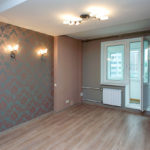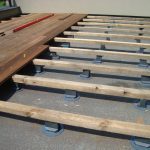When choosing a heating radiator, most buyers pay attention primarily to aesthetic characteristics. But at the same time, technical parameters are much more important. One of the most important among them is the level of heat transfer. It is he who determines the effectiveness of the device as a whole.

The heat dissipation of heating radiators is also sometimes called power. It characterizes the amount of heat transferred to a room over a certain period of time. Heat transfer from all radiators is due to radiation, convection and heat transfer. This is completely independent of the material of manufacture and the type of device. But at the same time, all radiators have a different ratio of these indicators.

It is necessary to pay attention to the material of manufacture first of all, if you want to choose an effective heater.
Each model has certain heat transfer characteristics. There are special tables in which all values are indicated. The suitable option can be selected only after comparing the indicators. Traditional cast iron batteries have the lowest heat transfer rates. Power section - about fifty to sixty watts. The thermal conductivity of cast iron is low, the surface of the radiator is small. Due to radiation, the main heat loss occurs. Only twenty percent remains for convection. But at the same time, you should not immediately abandon cast-iron radiators and recognize them as ineffective, since they just transfer the greatest amount of heat to the room if the temperature of the coolant is equal. High radiation rates in this case become a plus.

Cast iron radiator, in spite of low efficiency, can be an ideal solution for an apartment building with “poor heating”. It is he who, even at low coolant temperature, will be able to squeeze the maximum out of it. Cast iron is able to give heat for a long time, as it accumulates in the material itself. If emergency outages occur, this ability will be very useful.

The power of steel radiators is also low. The small thickness of the ribs of devices made of this material allows to increase heat transfer. But at the same time, all the advantages over cast-iron counterparts are less weight and usually more attractive design. If the coolant temperature decreases, steel batteries immediately begin to show a significant drop in heat transfer.

The most powerful and efficient radiators are aluminum and bimetallic. In addition, they have an attractive appearance. However, aluminum is very demanding on water quality. If the coolant is contaminated, they deteriorate quickly. The development of corrosion also accelerates the drainage of coolant from pipelines, which is practiced during a break in the heating of apartment buildings.





-
 10 rules on how to best repair an apartment for rent
10 rules on how to best repair an apartment for rent
-
 Soundproofing and soundproofing of plastic windows
Soundproofing and soundproofing of plastic windows
-
 The advantages of houses up to 150 square meters. m
The advantages of houses up to 150 square meters. m
-
 What errors lead to water hammer in the heating system and how to avoid them
What errors lead to water hammer in the heating system and how to avoid them
-
 12 tips for choosing a good construction team
12 tips for choosing a good construction team
-
 How to make repairs once and for a long time
How to make repairs once and for a long time
-
 5 reasons to change the wizard without waiting for the repair to finish
5 reasons to change the wizard without waiting for the repair to finish
-
 When is it better not to glue paper wallpapers?
When is it better not to glue paper wallpapers?
-
 Why you can’t save money by installing infrared heating instead of gas
Why you can’t save money by installing infrared heating instead of gas
-
 When an adjustable floor is more profitable than a capital screed
When an adjustable floor is more profitable than a capital screed
-
 Smart sockets: why call a coffee maker or kettle
Smart sockets: why call a coffee maker or kettle
-
 7 mistakes that people usually make when self-organizing home construction
7 mistakes that people usually make when self-organizing home construction
New publications are published daily on our channel in Yandex. Zen
Go to Yandex. Zen


